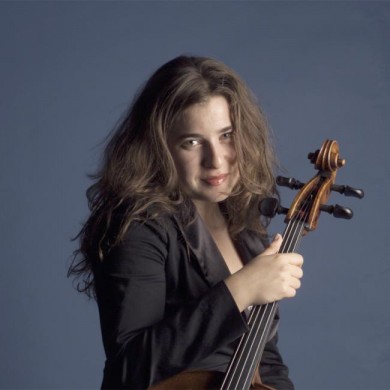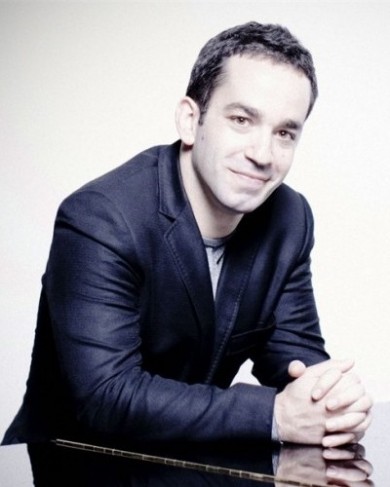Two gifted young soloists and the Academy serve up one of the year’s finest concerts at the Broward Center

Alisa Weilerstein performed Haydn’s Cello Concerto No. 1 in C major with the Academy of St. Martin in the Fields Monday night at the Broward Center.
The Academy of St. Martin in the Fields lived up to its reputation Monday, bringing two superb young soloists to Fort Lauderdale for what turned out to be one of the best concerts of the year.
In a performance at the Broward Center for the Performing Arts, the illustrious English chamber orchestra put all its virtues on display—the precision and warmth of the strings, the sonic beauty and well-blended tones of woodwinds and horns, the assured musicianship that yields authentic, well-executed performances of works spanning three centuries. They performed without a conductor, being led from the first violin chair by Andrew Haveron.
The ensemble’s U.S. tour, which opened March 1 in Santa Monica, Calif., wraps up Tuesday with a matinee performance at the Kravis Center in West Palm Beach, and this will definitely be a concert worth catching.
The highly regarded American cellist Alisa Weilerstein performed Haydn’s Cello Concerto No. 1, a work heard less frequently than its flashier Romantic counterparts. But in Weilerstein’s hands, this graceful, melodic piece seemed every bit as big and dramatic as the Dvořák concerto.
It wasn’t that she romanticized it. She opened in a straightforward, dignified manner and an unsentimental tone, not the big cello sound she might have lavished on other works. But she found the sizzle in this well-mannered 18th-century concerto, digging hard with her bow into the rapid passagework on the lower strings, but with such a sure technique that all the notes came through brilliantly. And in melodic passages she snapped off the ornaments in a crisp authoritative manner that kept the focus on the tunes, all performed with an unaccustomed grace and style.
Her smooth supple bow arm brought exquisitely sensitive phrasing to the second movement, with a quiet section that she imbued with great mystery and tension. The last movement was every bit the display of joyful virtuosity that it should have been. She took it at high speed, her bow biting into the strings in fast passages or bouncing over them in arpeggios. She didn’t just zip through and get all the notes played, she brought fire and excitement to the performance.

Inon Barnatan Photo: Marco Borggreve
After intermission came Bach’s Piano Concerto No. 1 in D Minor, a work for harpsichord that’s thought to have been based on a lost violin concerto. The Israeli-born pianist Inon Barnatan walked on stage and sat in front of a Steinway concert grand that would have seemed gigantic to the composer. But Barnatan made judicious use of the instrument’s resources, employing its capabilities to vary his tone in webs of chords and arpeggios—now delicate and harp-like, now grand and reminiscent of the organ—with which he accompanied themes in the orchestra.
In the first and last movements, Barnatan integrated the piano’s sound into that of the orchestra, giving the performance an authentic Baroque tone despite the use of the modern piano. The high point was the second movement, a long aria-like melody, bruised with dissonant harmonies and pathos, which he brought to a powerful climax.
An English ensemble touring the United States has to play some English music, and the Academy obliged with Benjamin Britten’s early Variations on a Theme of Frank Bridge. This is virtuoso string orchestra music, and the Academy of St. Martin delivered. The opening crackled with nervous tension, and the Romance was a graceful interlude in which the skill of the violinists was on display, as they effortlessly leaped high up the instrument’s highest string in passages that in a lesser ensemble would have been full of strain and the stray tones of the player or two who didn’t quite make it. The Moto perpetuo was an episode full of fire and bite. In the Chant, violas carried the theme under a glassy accompaniment in the violins, showing what varied and unusual tone colors can be drawn from a string orchestra.
They closed with Haydn’s Symphony No. 44 in E Minor, performed with the musicians standing, except for the cellos and bassoon. Strings again gave a brilliant performance, aggressively and vigorously attacking Haydn’s dramatic minor-key passagework, with the orchestra’s precision never coming off as mechanical. Woodwinds and horns played with great elegance, with horns restraining their volume but penetrating the sounds of the orchestra with just the distinctiveness of their tones. The last movement was a model of crisp precision, brought off with transparency and style, even in the most complex contrapuntal passages.
The Academy of St. Martin in the Fields repeats the program 2 p.m. Tuesday at the Kravis Center in West Palm Beach. kravis.org, 561-832-7469.
Posted in Performances
Leave a Comment
Tue Mar 19, 2013
at 12:31 pm
No Comments




